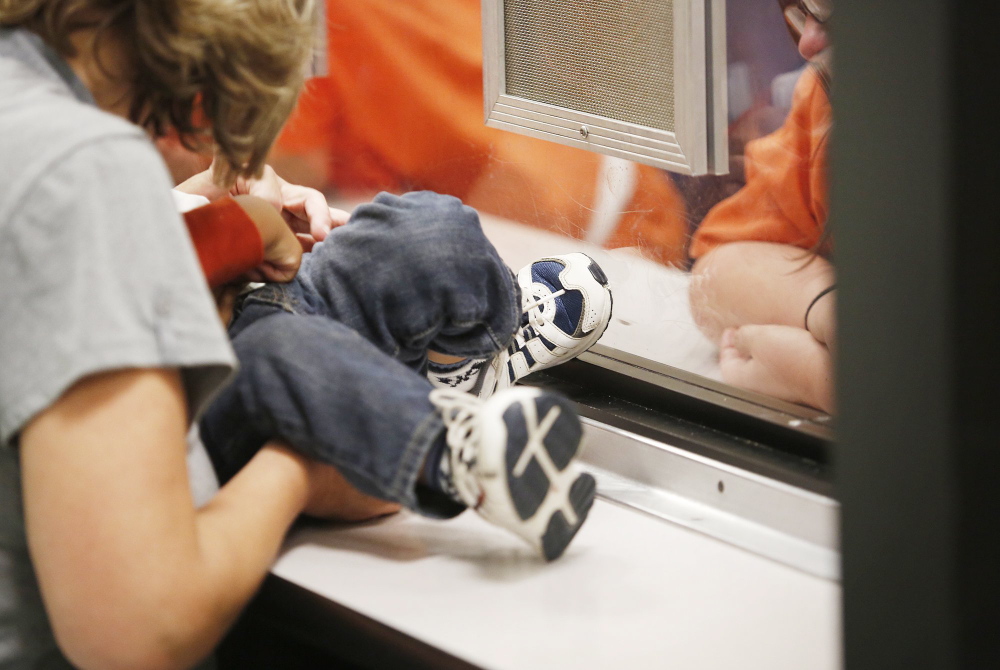Video conferencing is transforming modern life, lowering the geographical barrier to accessing services ranging from higher education to specialized health care. But for people behind bars, the video technology that’s being embraced by a growing number of Maine’s county jails doesn’t go far enough toward maintaining crucial family ties.
Three Maine jails have video visiting in place (Somerset County; Two Bridges Regional, serving Lincoln and Sagadahoc counties, and York County), and Maine Public Radio recently reported that three others (Androscoggin, Cumberland and Hancock) are considering adopting the technology.
Two Bridges and York County have eliminated in-person family visits entirely. Inmates are in a separate room in the jail during visits and communicate with their loved ones through video cameras. Somerset still allows in-person visits, but they’re non-contact: Inmates and their loved ones cannot touch and are separated by glass.
The reason for the policy shift? Jail administrators point to the need to stem the steady flow of contraband entering the jails through means as innocuous as a baby’s diaper or a quick kiss. (In a high-profile incident at Two Bridges, an Episcopal priest was convicted of smuggling Suboxone to two inmates; more recently, a Cumberland County inmate died of an overdose of smuggled drugs.) Officials also cite the expenses involved in paying jail staff to supervise visits.
All of these are valid concerns. The number of Mainers struggling to overcome addiction to heroin and other opioids has soared in recent years, and it’s no coincidence that drug arrests and the jail population have increased, too. But eliminating contact visits won’t mitigate the drug crisis that’s filling cells. Achieving that mission calls for investing more money in drug detoxification and medication-assisted addiction treatment by expanding Medicaid eligibility and keeping the Affordable Care Act in place.
Researchers have found that the setup of video visitation terminals – the camera is usually a few inches above the monitor – doesn’t enable the eye contact that lets inmates and their loved ones connect with each other. Good relationships with people on the outside are what help keep inmates focused on rehabilitation and release. And when they get out, as most inmates eventually do, those with strong ties are far less likely to re-offend and end up back in jail, driving up corrections costs (paid for by taxpayers), decades of studies show.
It’s common sense: Someone who has a link to the community will value their place in it enough to want to stay there and become a productive citizen. We all benefit from contact visits – which is reason enough to consider whether the short-term gain of eliminating them is worth the long-term risk.
Send questions/comments to the editors.


